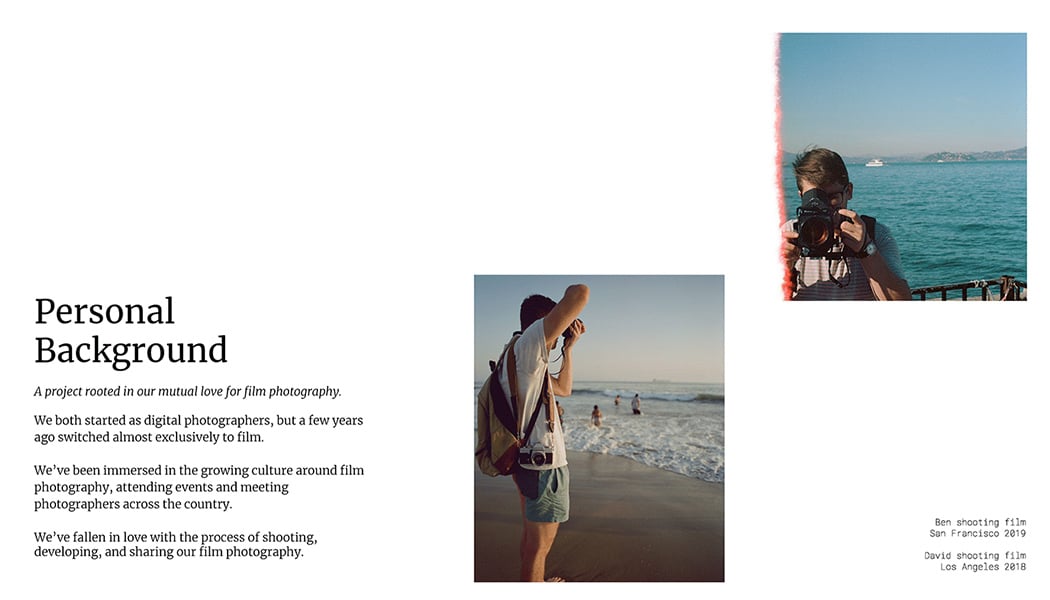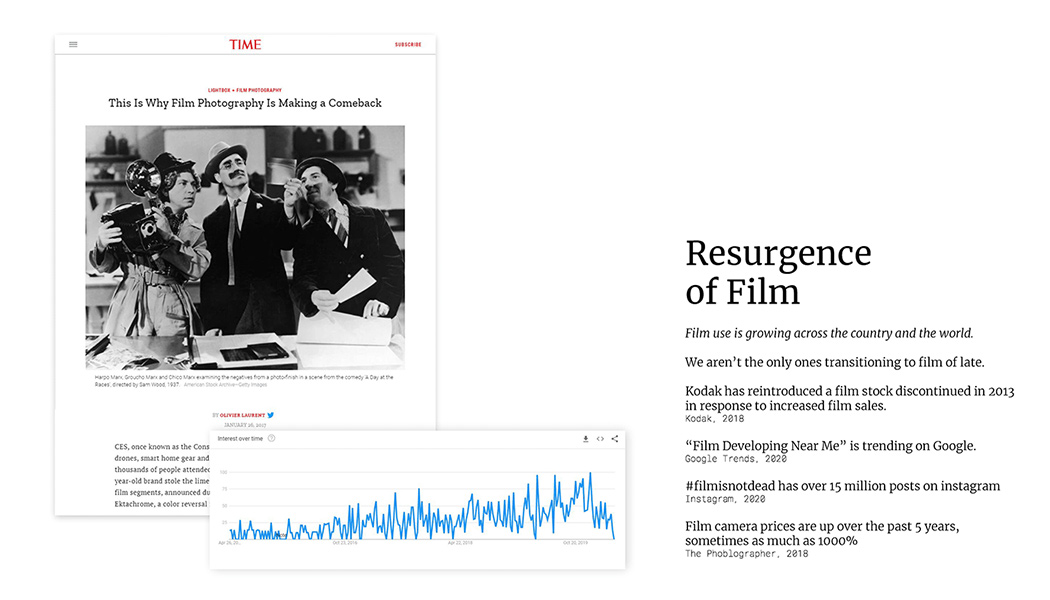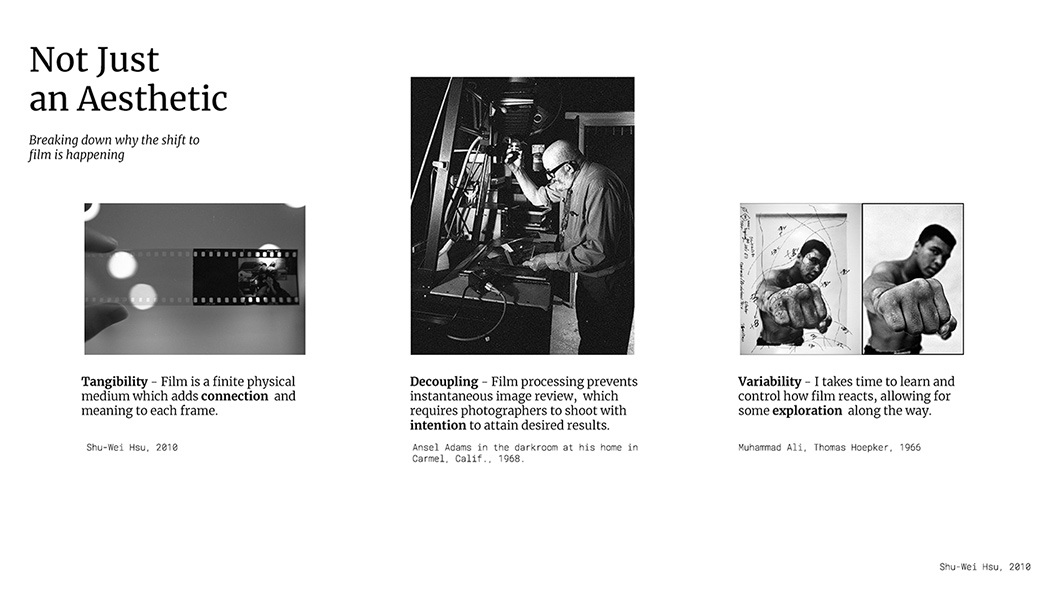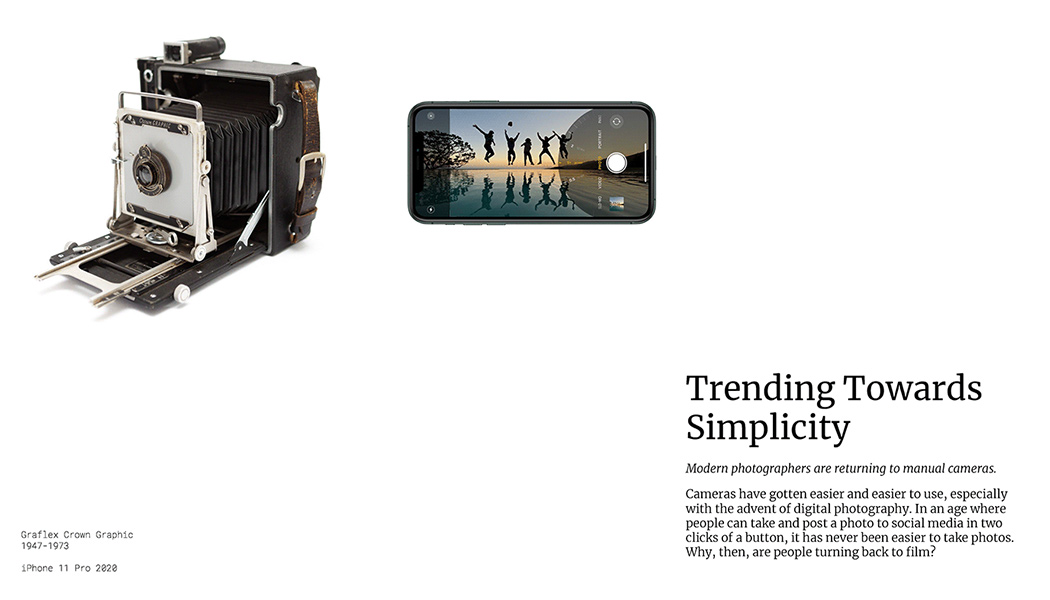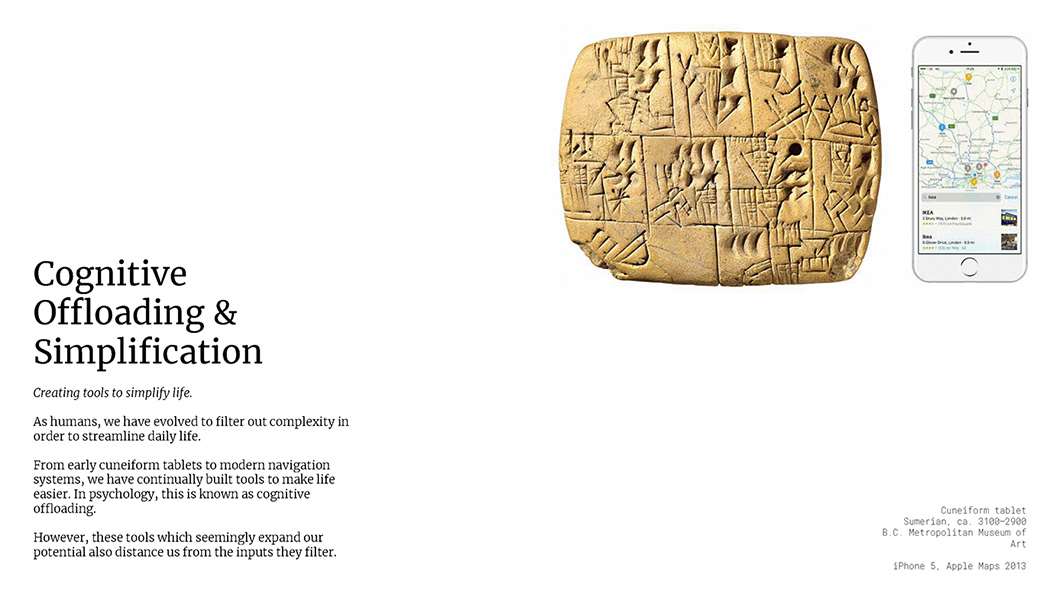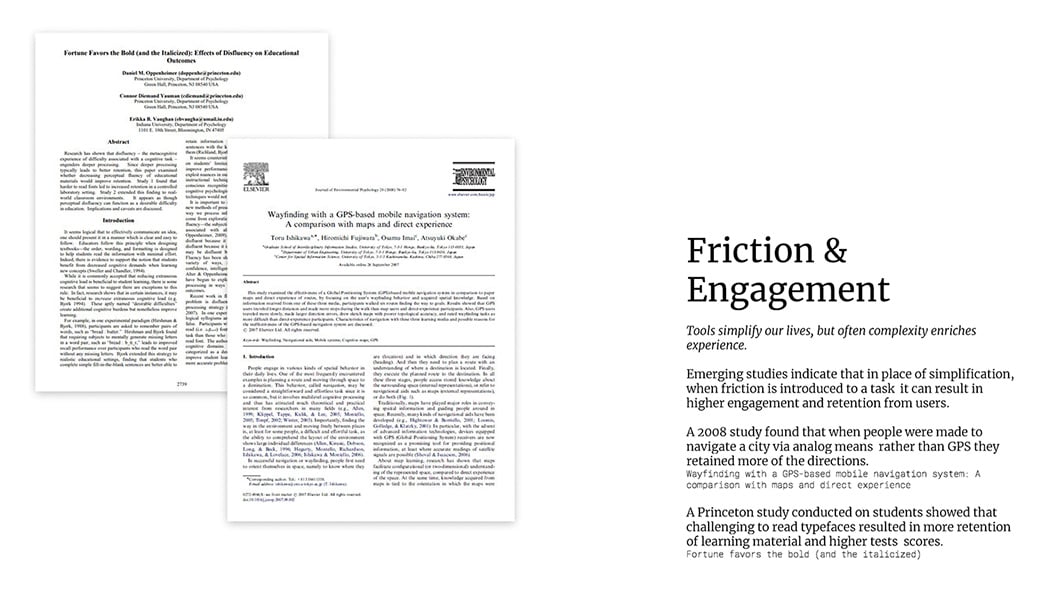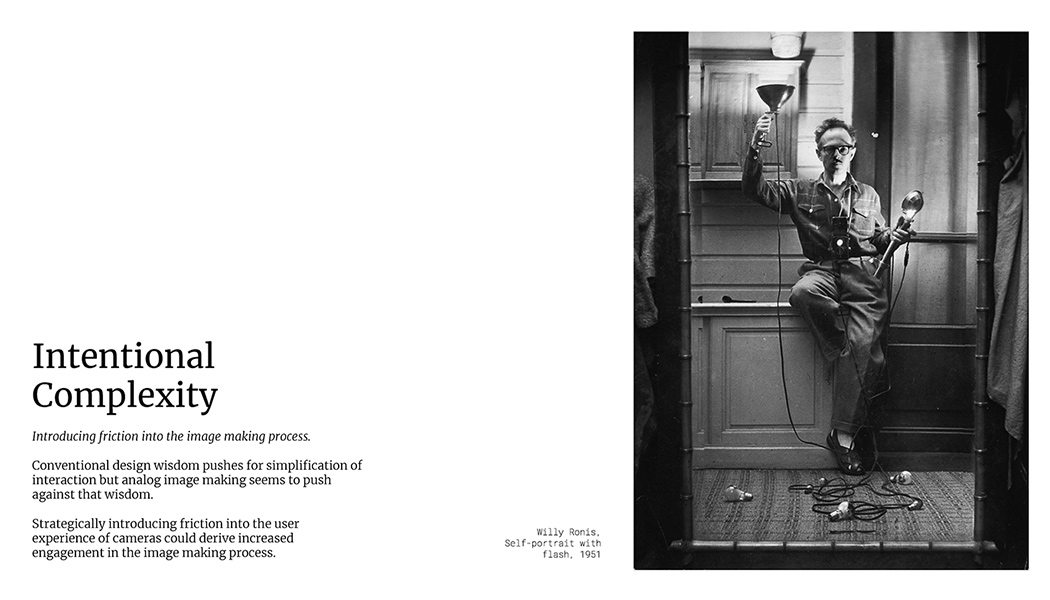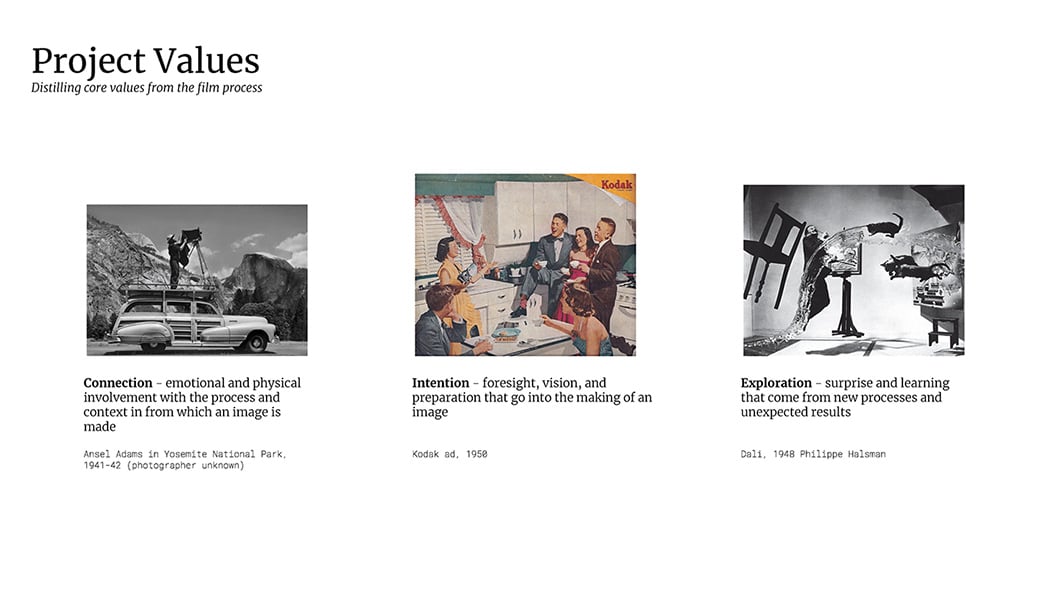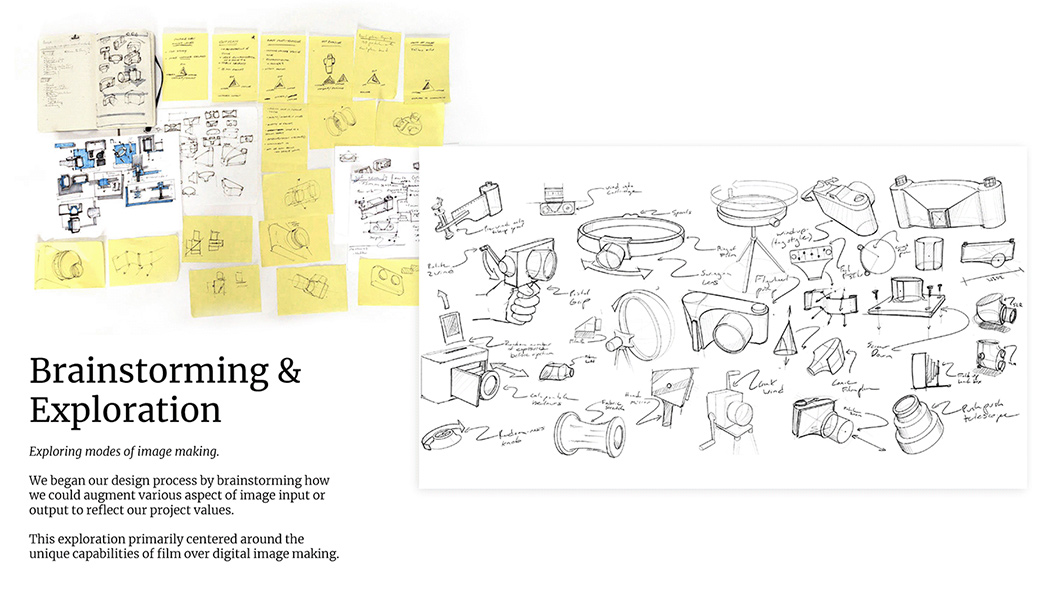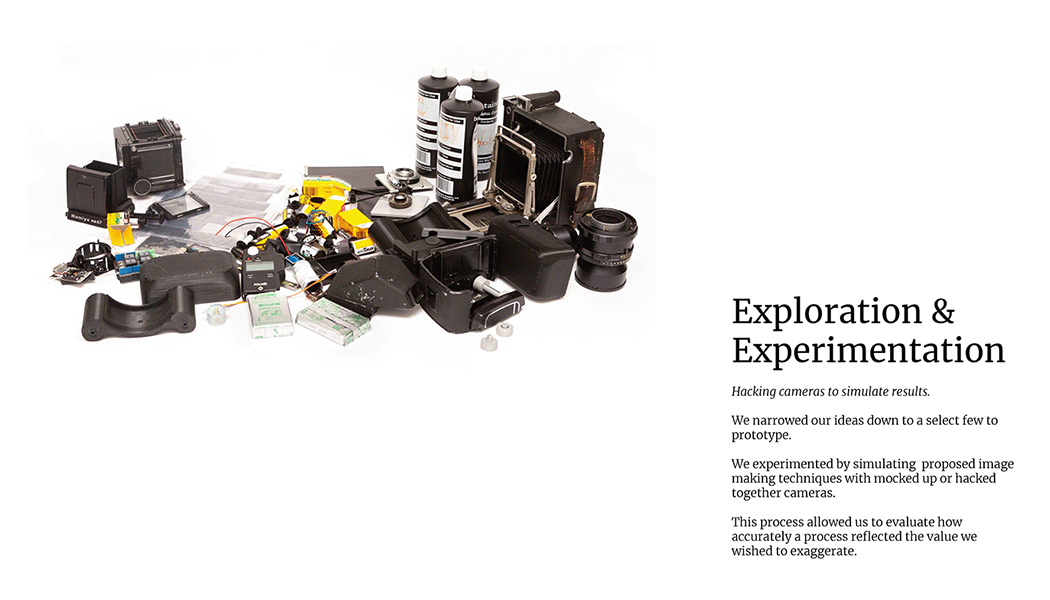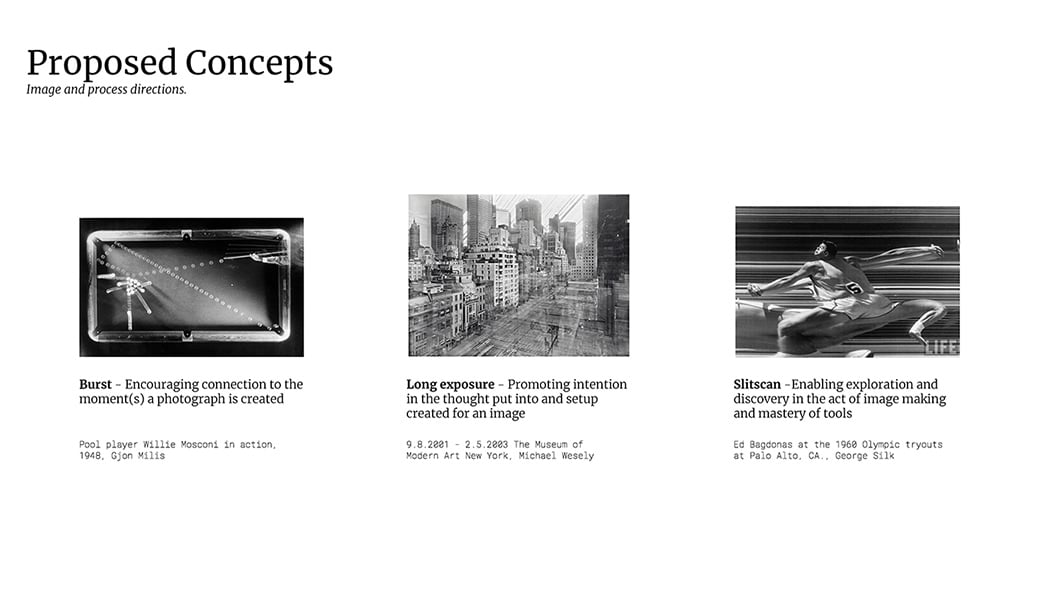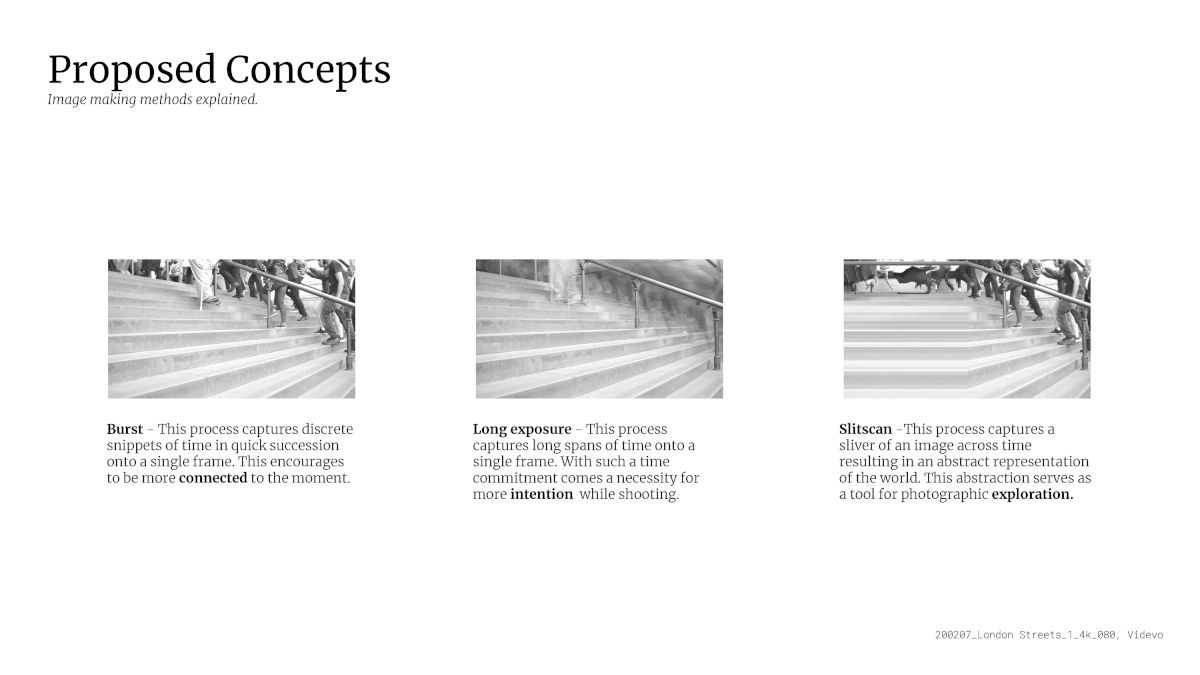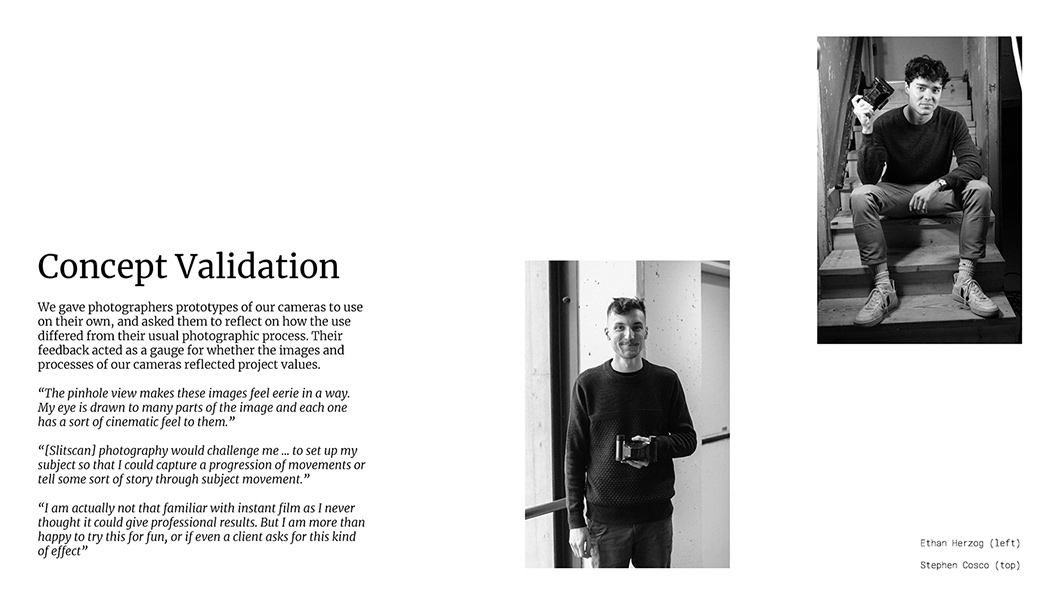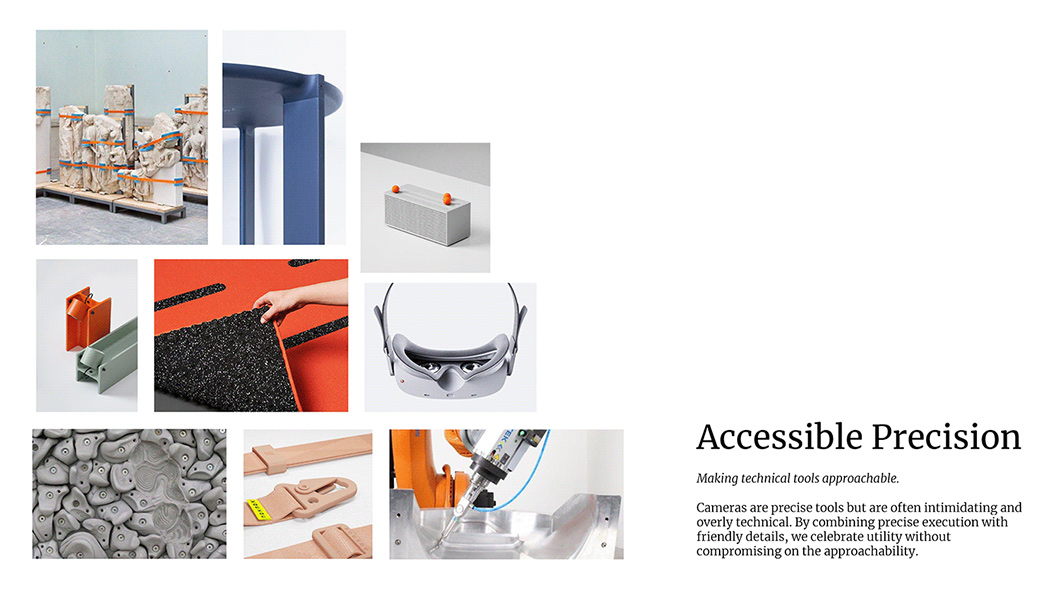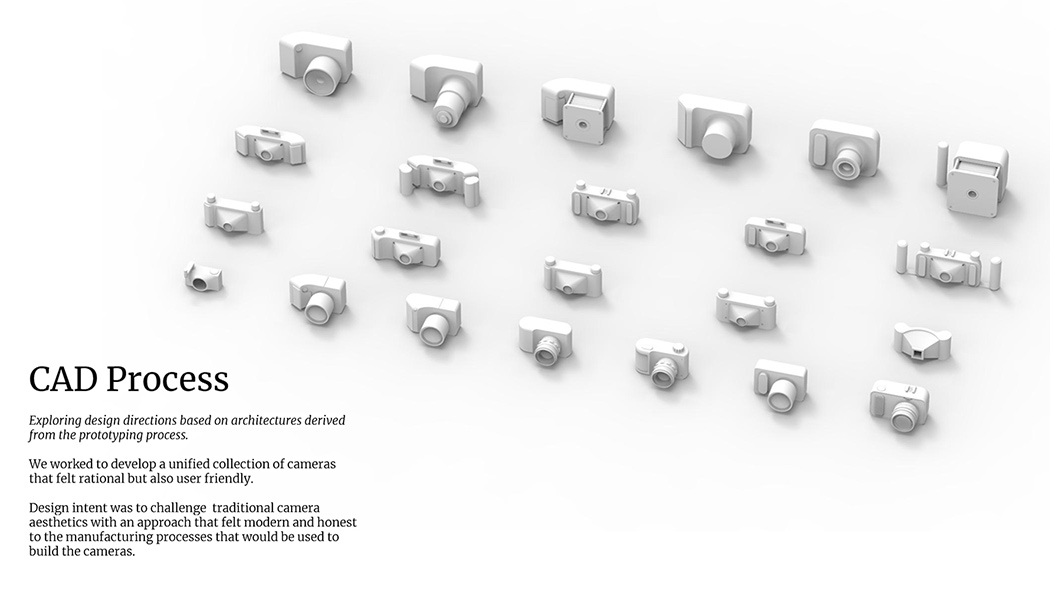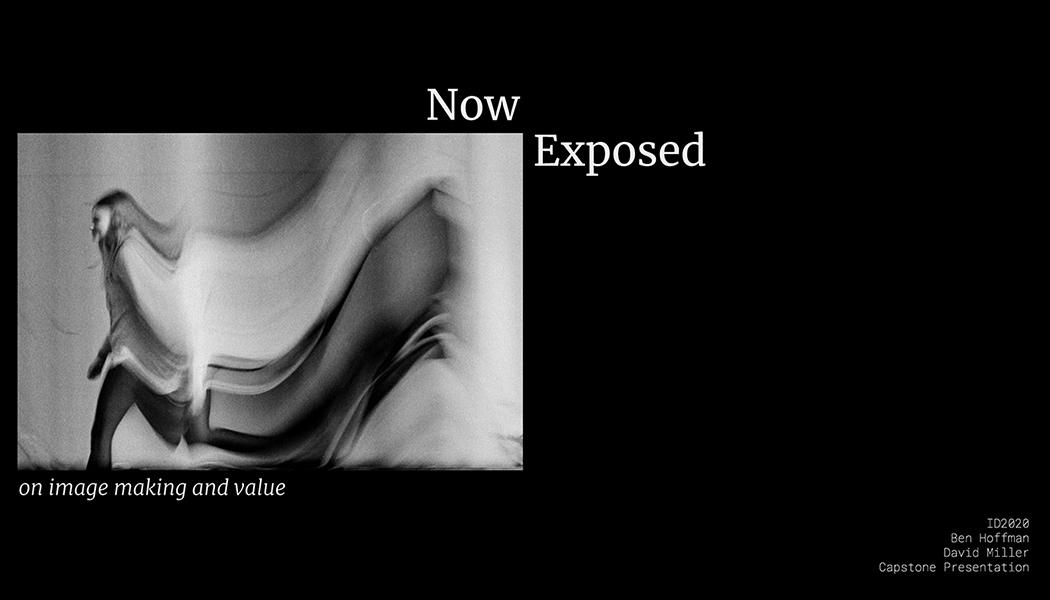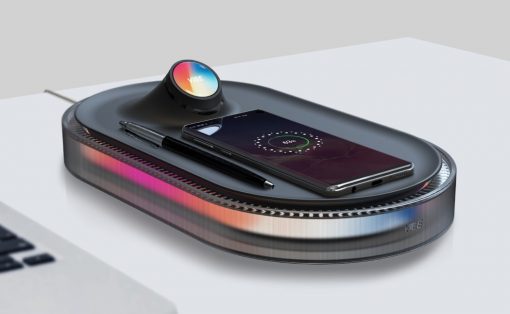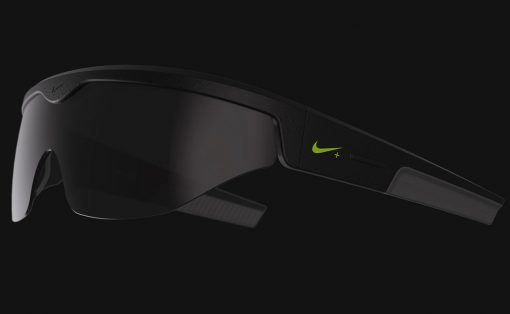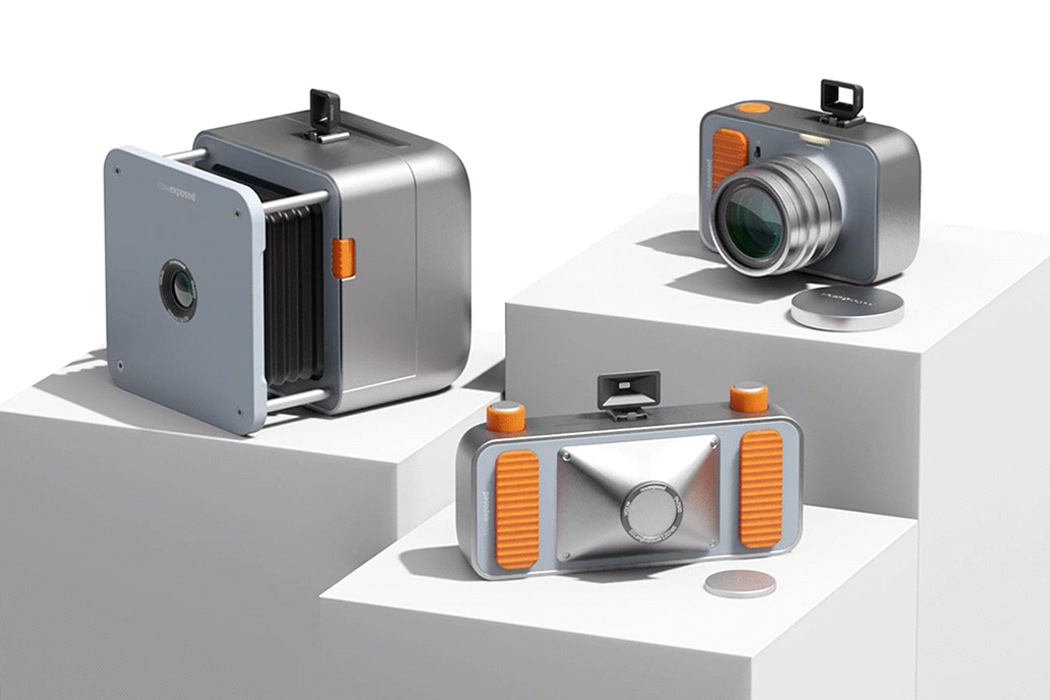
In our previous article about a modern turntable, we noticed a resurgence of vinyl records and other forms of “retro” devices. It seems that, in 2020, people are nostalgic for charming, old-school tech given a modern-day facelift. Film photography has experienced a similar revival, even though there are cheaper, more convenient ways to take beautiful pictures. (Just whip out your phone, for instance!) So, why is this older medium making a comeback? The creators of the Now Exposed film cameras propose this as an answer: “Tools simplify our lives, but often complexity enriches [the] experience.” In other words, hard work makes a process meaningful and more valuable. This line of thinking inspired the creation of the Now Exposed film cameras, a series of products intended to challenge photographers creatively, yet still invite beginners to explore the medium.
The cameras featured in the Now Exposed collection each have a unique purpose. They use different lenses and exposure techniques to force the photographer to think differently about image composition. The series consists of three distinct cameras, each one mimicking a photography ‘mode’ – the Burst Camera, the Long Exposure Camera, and the Slitscan Camera. The Now Exposed Cameras, as a whole, manages to make film photography, an intimidating art medium, accessible to new users while presenting new creative challenges for experts. Each camera comes with instructions imprinted directly onto the device. These snippets explain how each camera operates and what film cartridges you need to buy. The Now Exposed set gives photographers the framework to create dynamic, abstract works of art. In an age with high-resolution phone cameras, flattering Instagram filters, and photo-editing apps, anyone can create beautiful images with ease. The Now Exposed Cameras, on the other hand, invites users to create innovative artwork through experimentation.
Designer: David Miller and Benjamin Hoffman
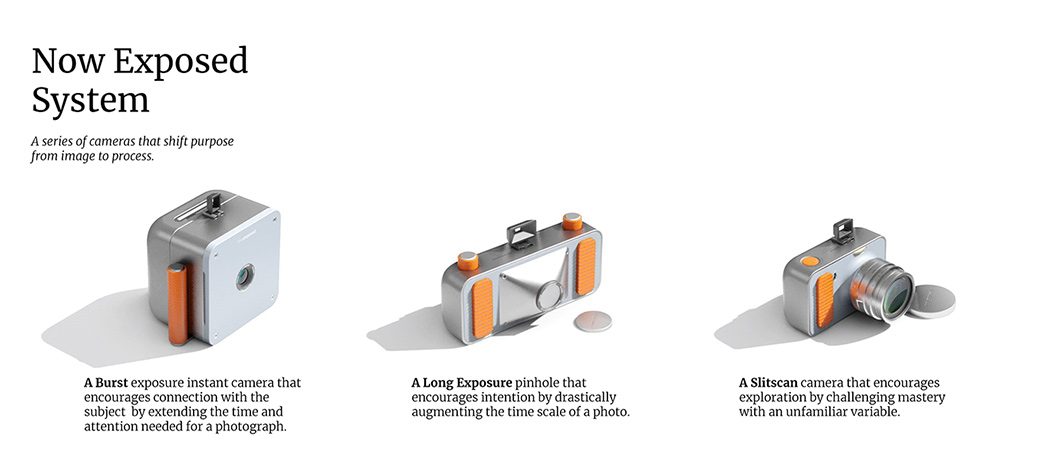
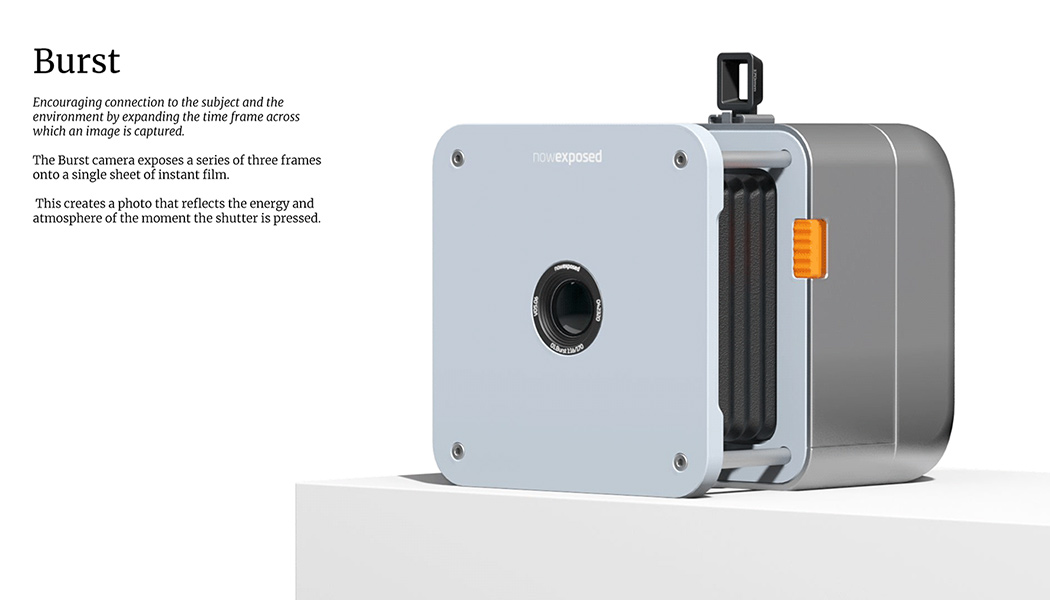
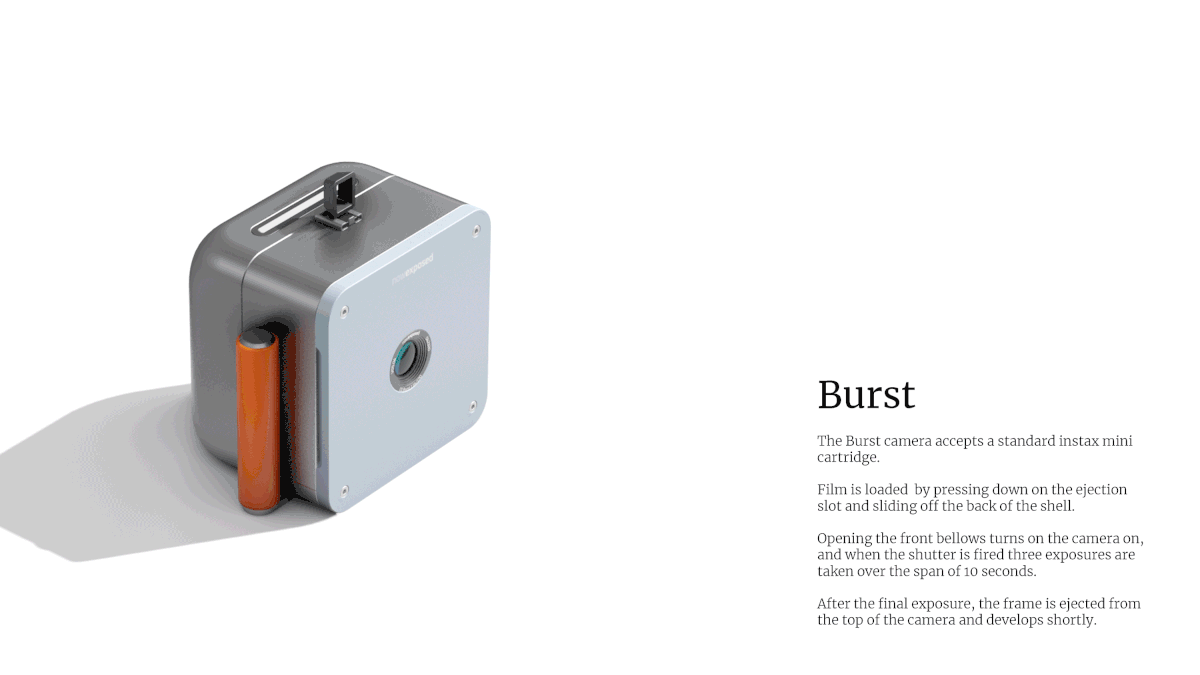
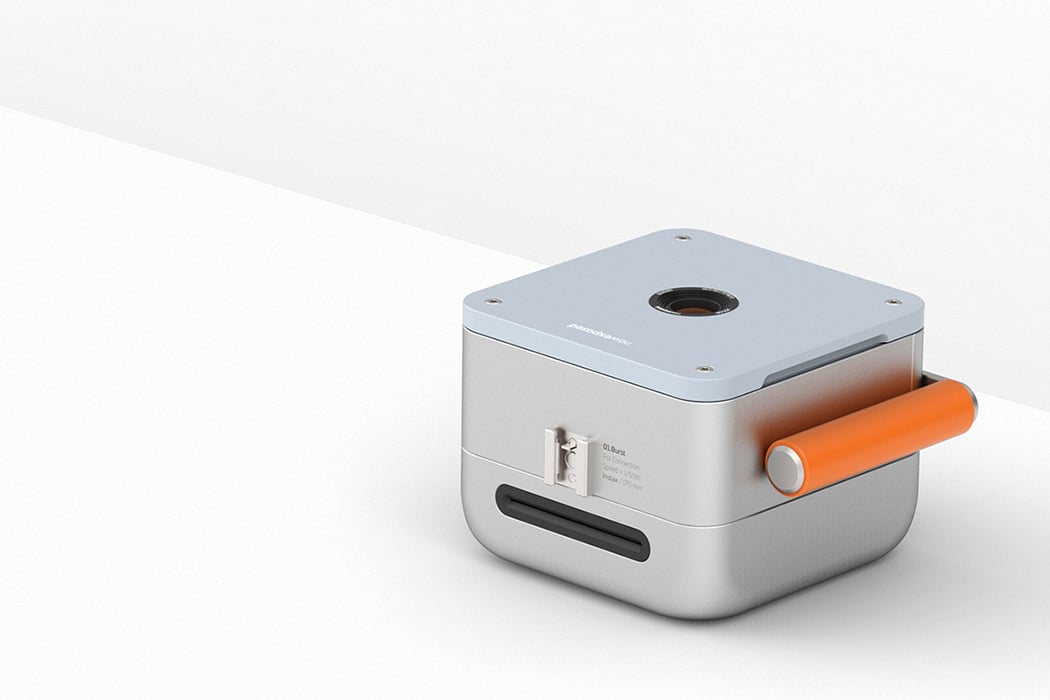
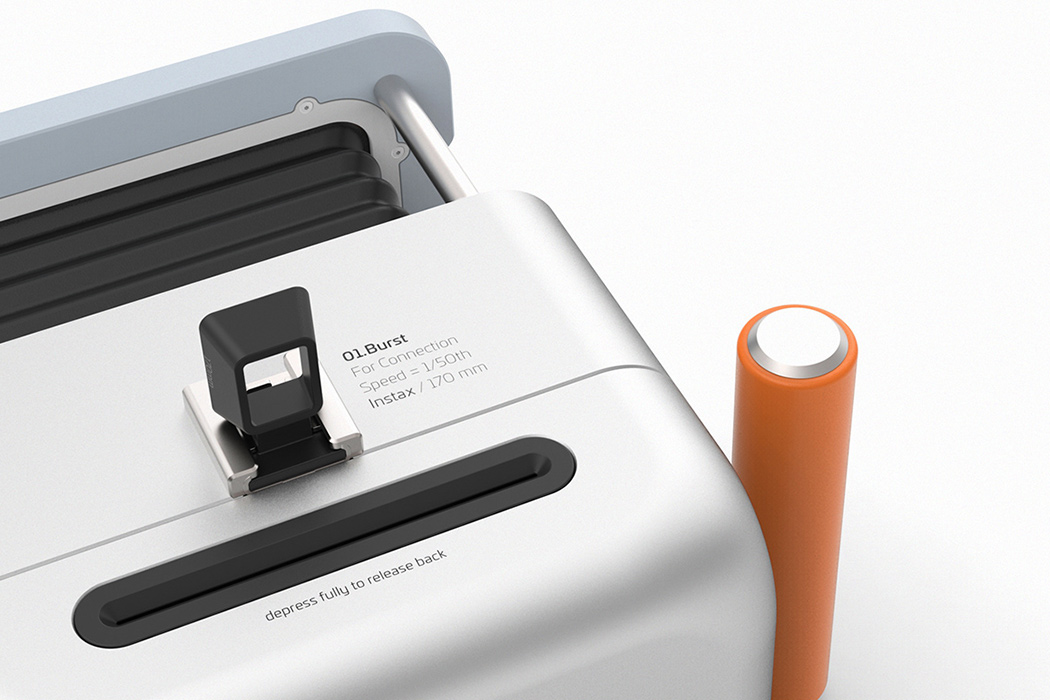
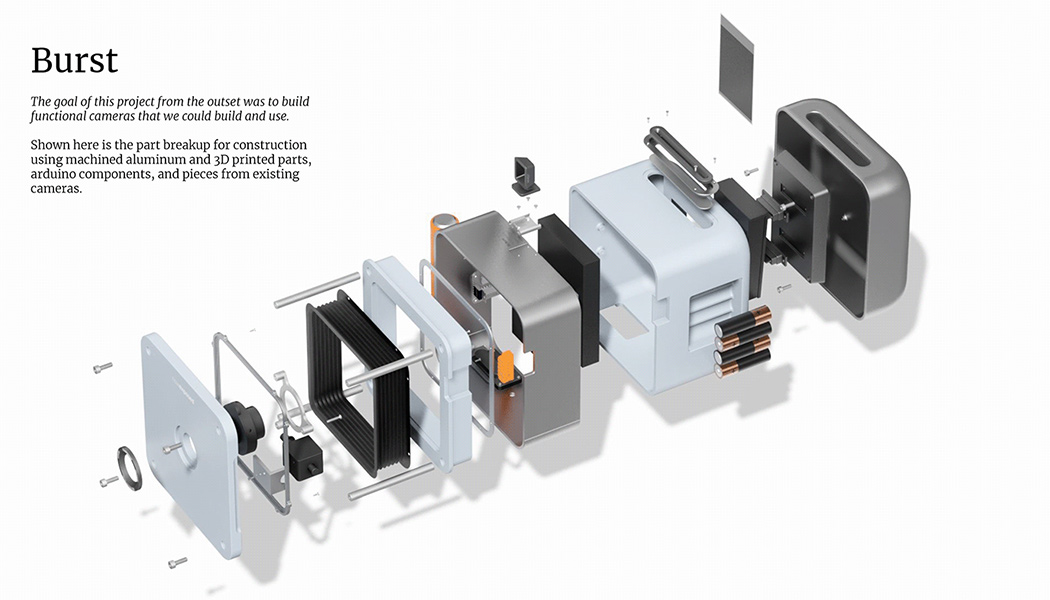
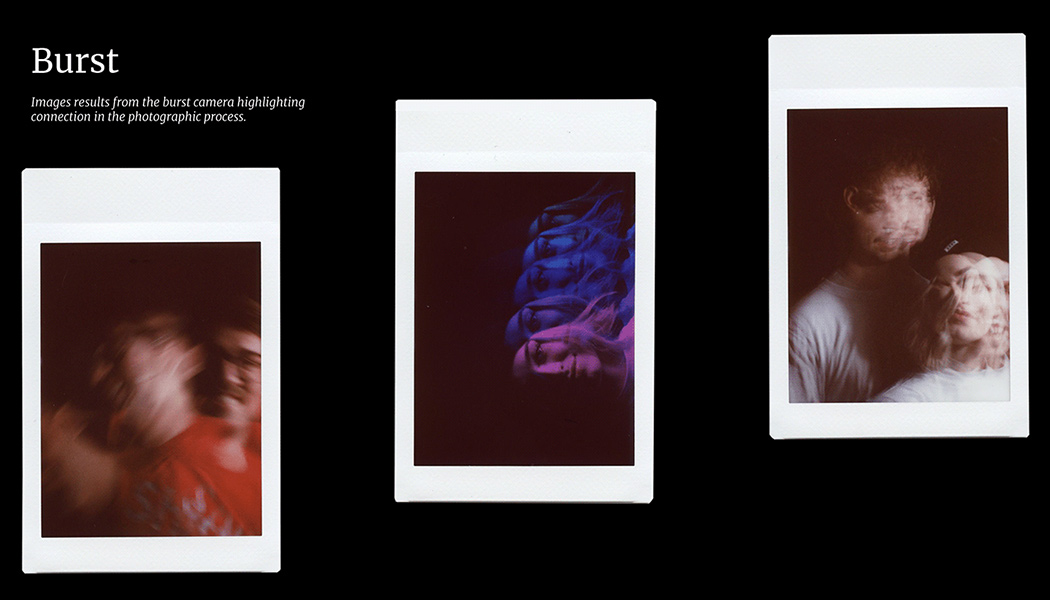
The Burst
The Burst resembles a modern version of the daguerreotype cameras from the early 1900s. The name might not be familiar, but you would quickly recognize its accordion-like lens from any old Western movie. The Burst camera works by snapping three frames in ten seconds and exposing them onto a single sheet of film. This action could be, for example, a subject running across the frame, or maybe cycling through various facial expressions. This “burst,” this fleeting action, is captured almost in a slow-motion blur. The Burst instant camera asks the photographer to think about each frame captured in those ten seconds, fostering a deeper connection with the moment.
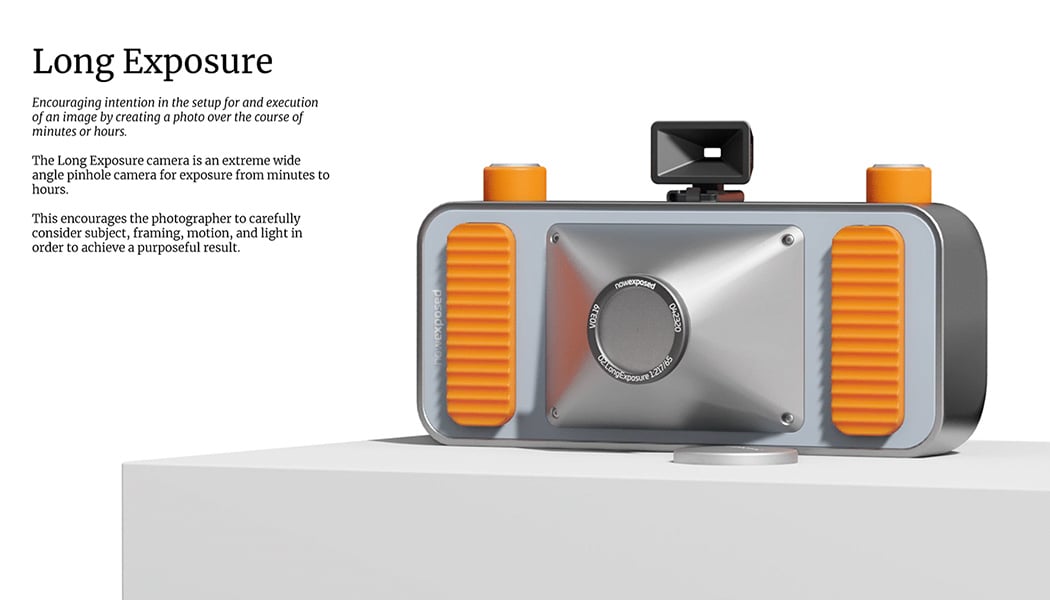
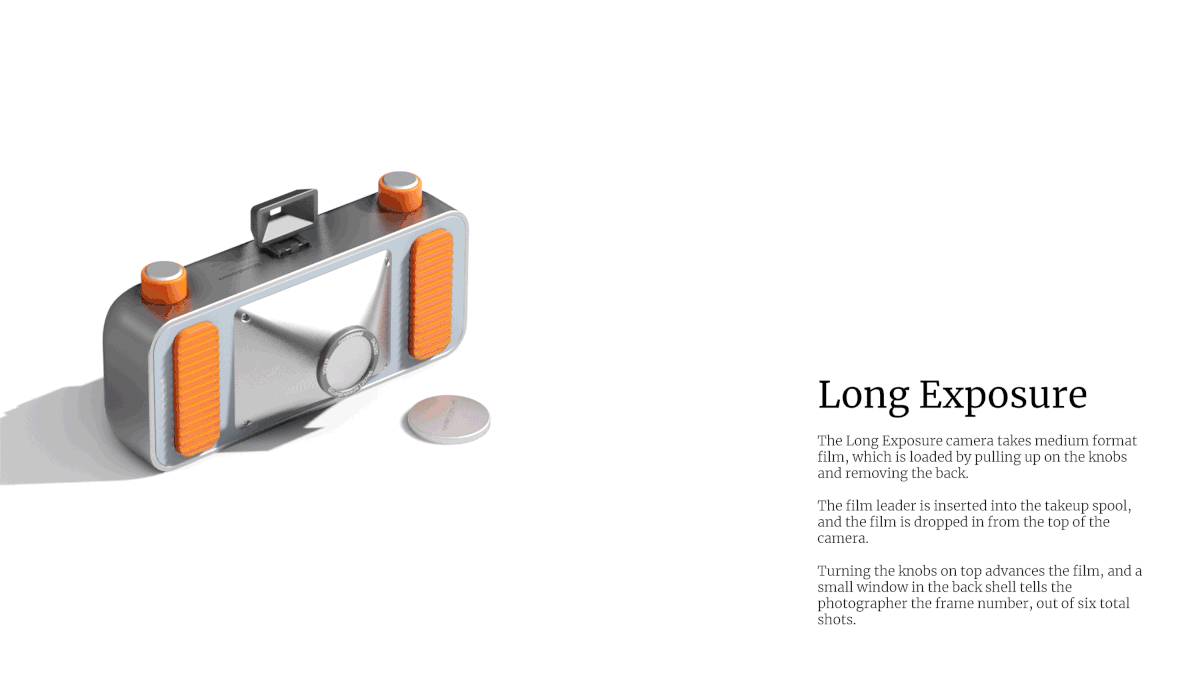
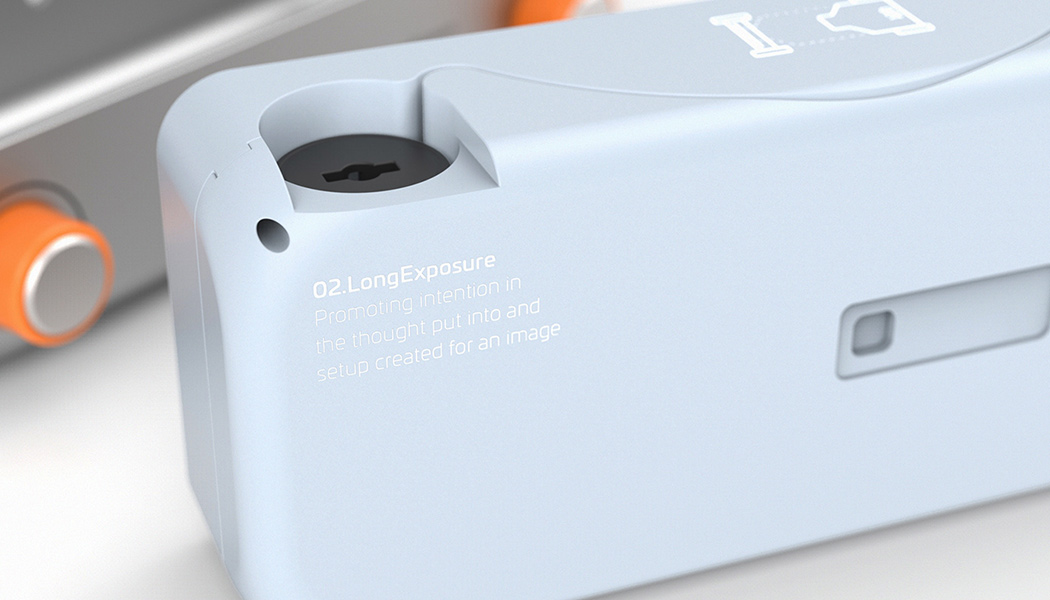
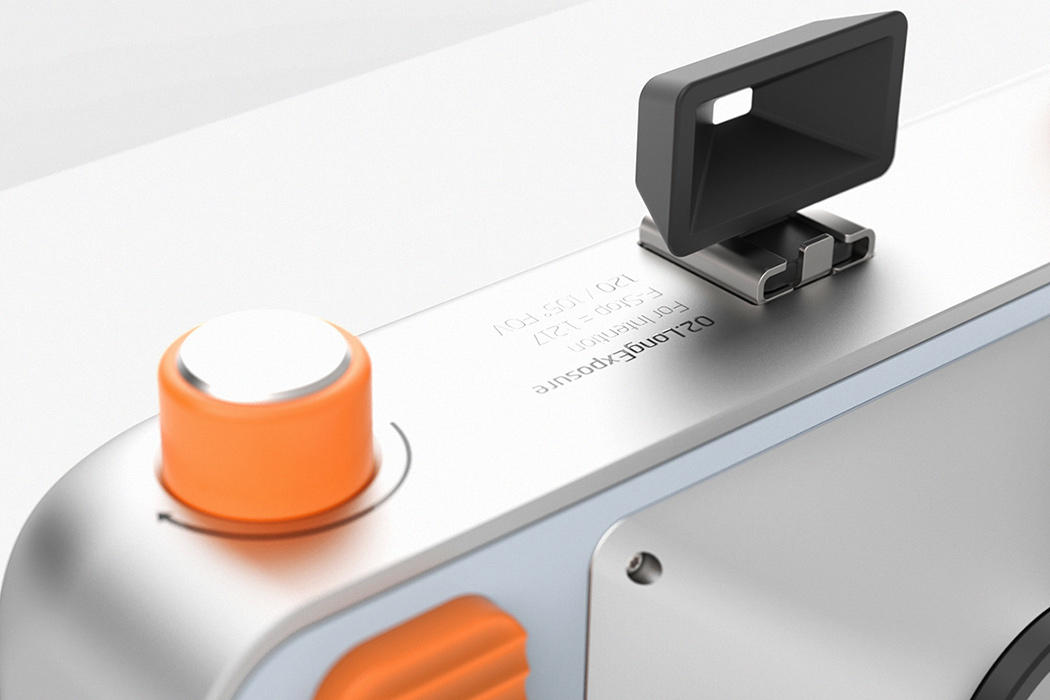
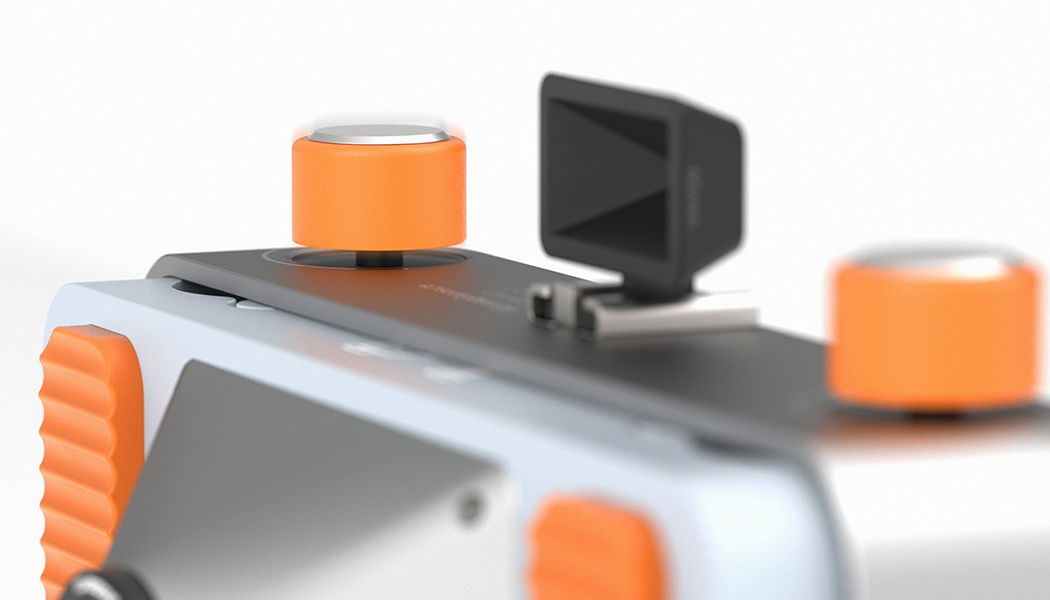
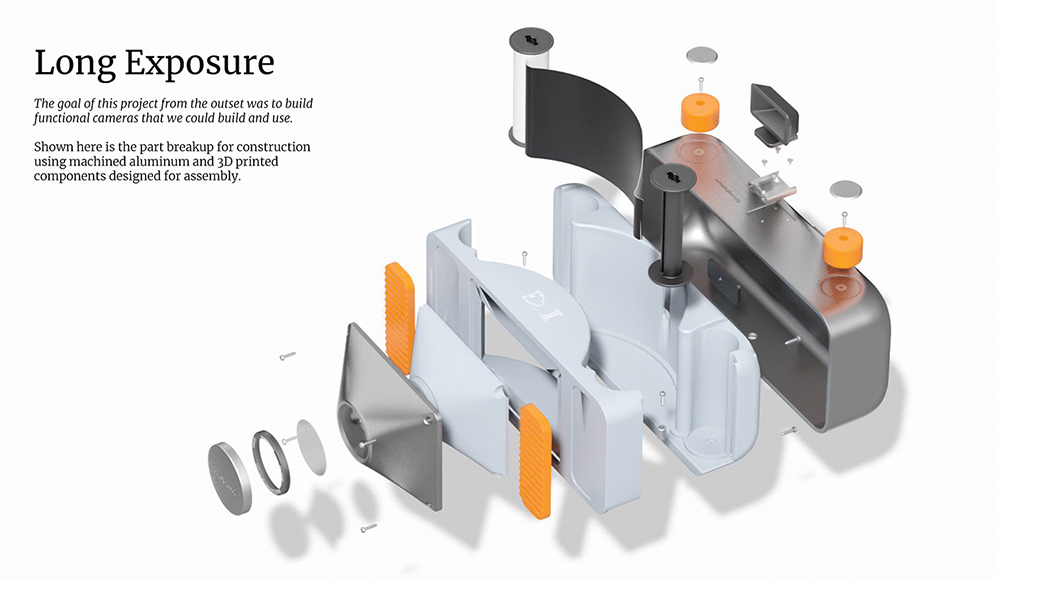
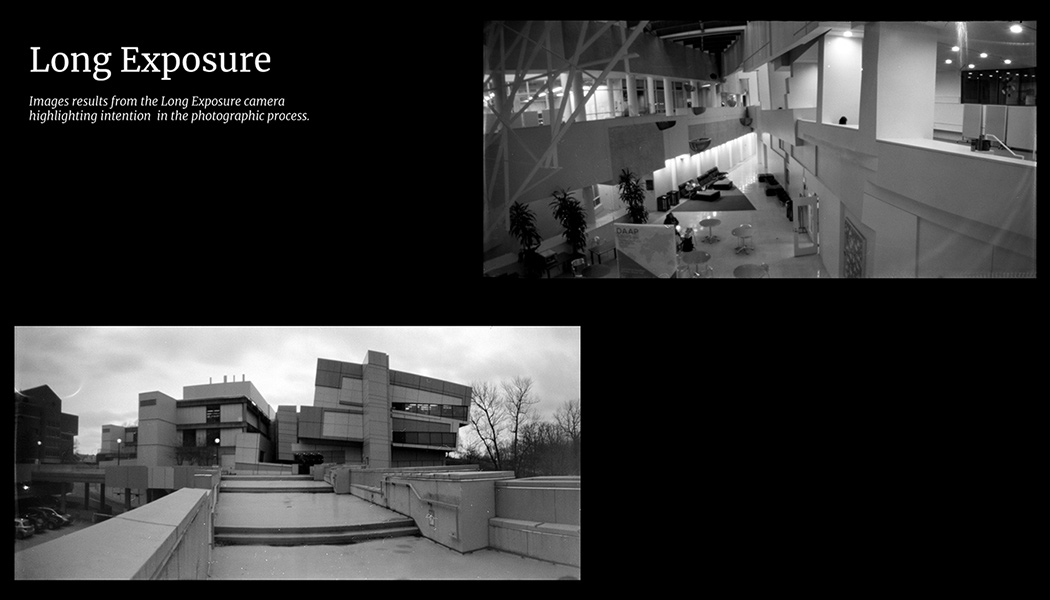
The Long Exposure
Instead of snapping a ten-second snippet, the Long Exposure camera captures long periods on one image. Imagine a time-lapse captured in a still image: that is the purpose of this device. The combination of the wide-angle shot and the lengthy exposure time encourages the photographer to think carefully about the framing of the shot. There’s nowhere to hide with this wide lens, which encourages the photographers to think about its composition, the movements it will capture, and what message the finished product will convey.
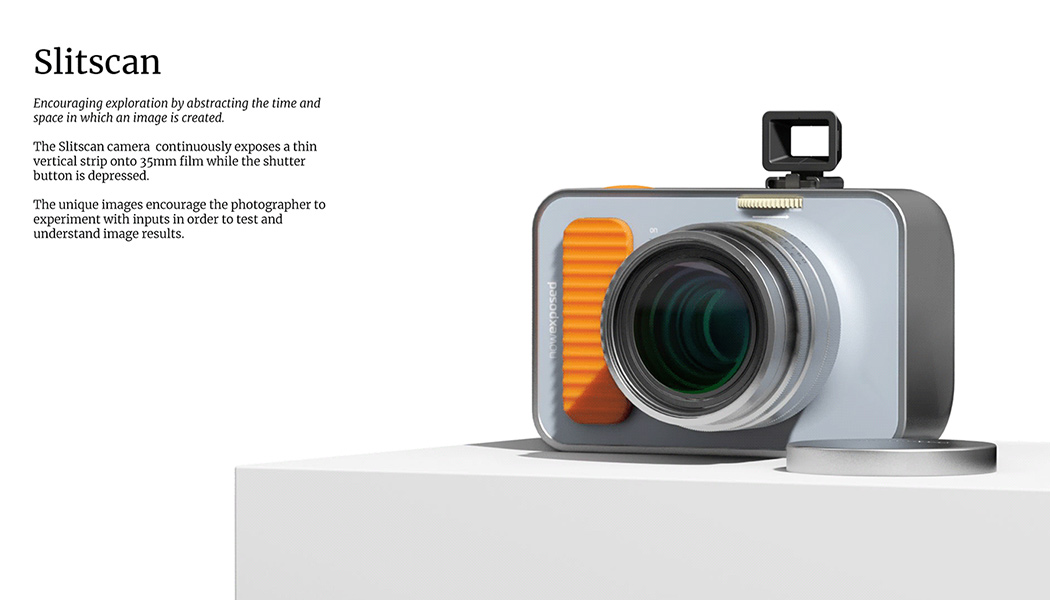
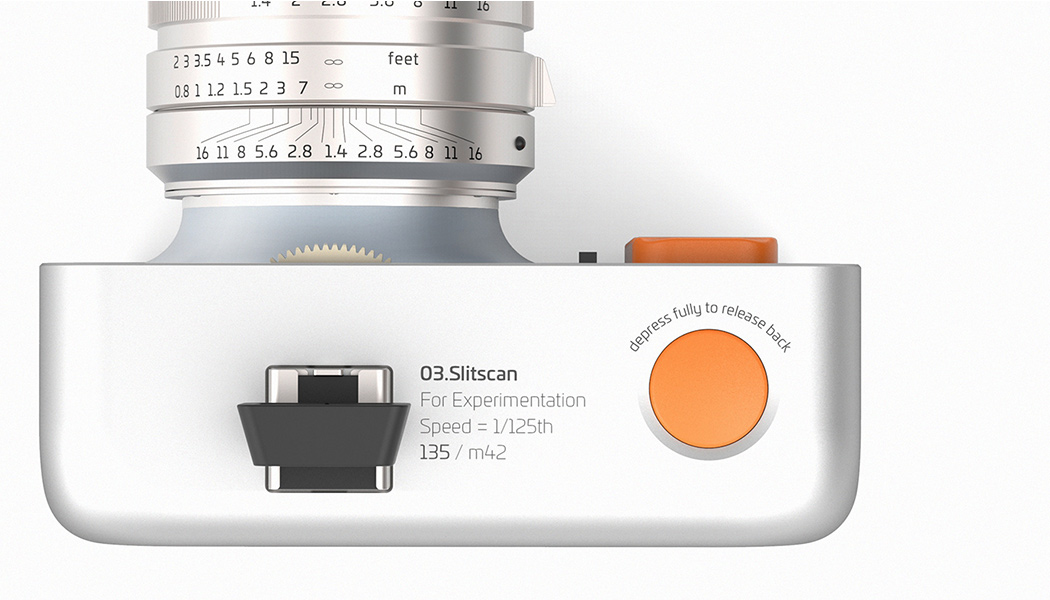
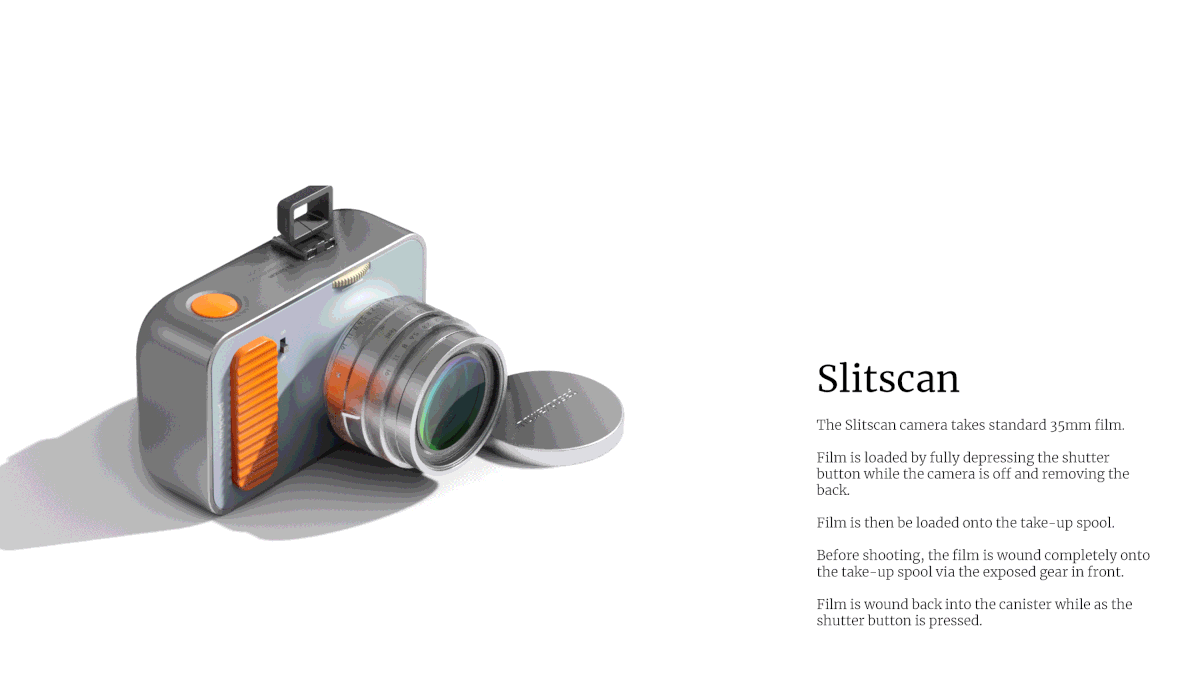
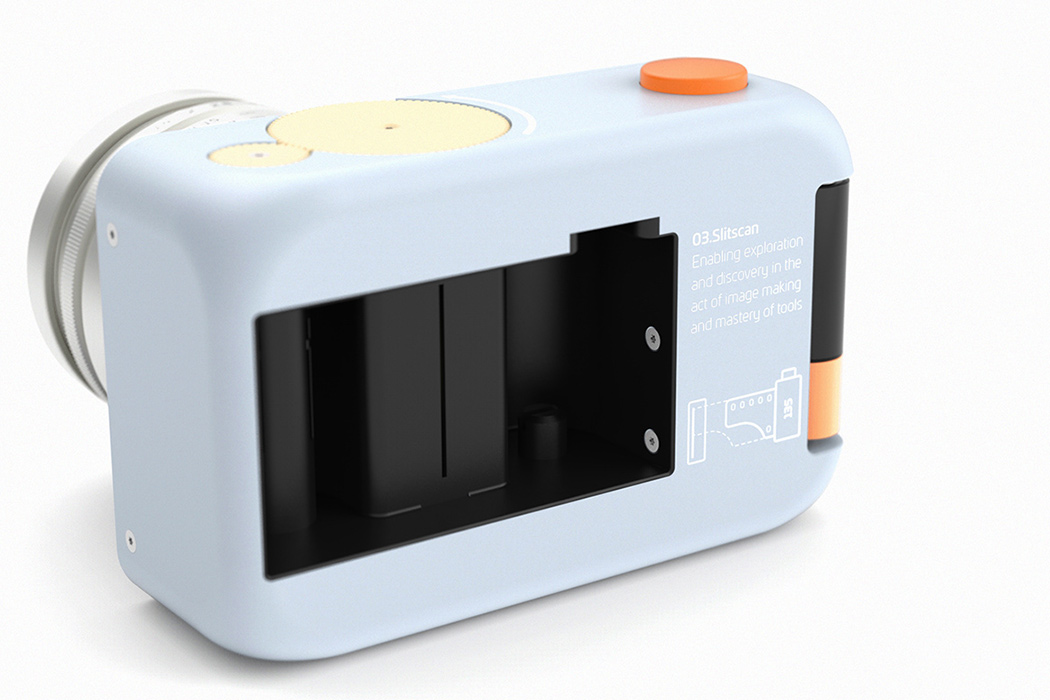
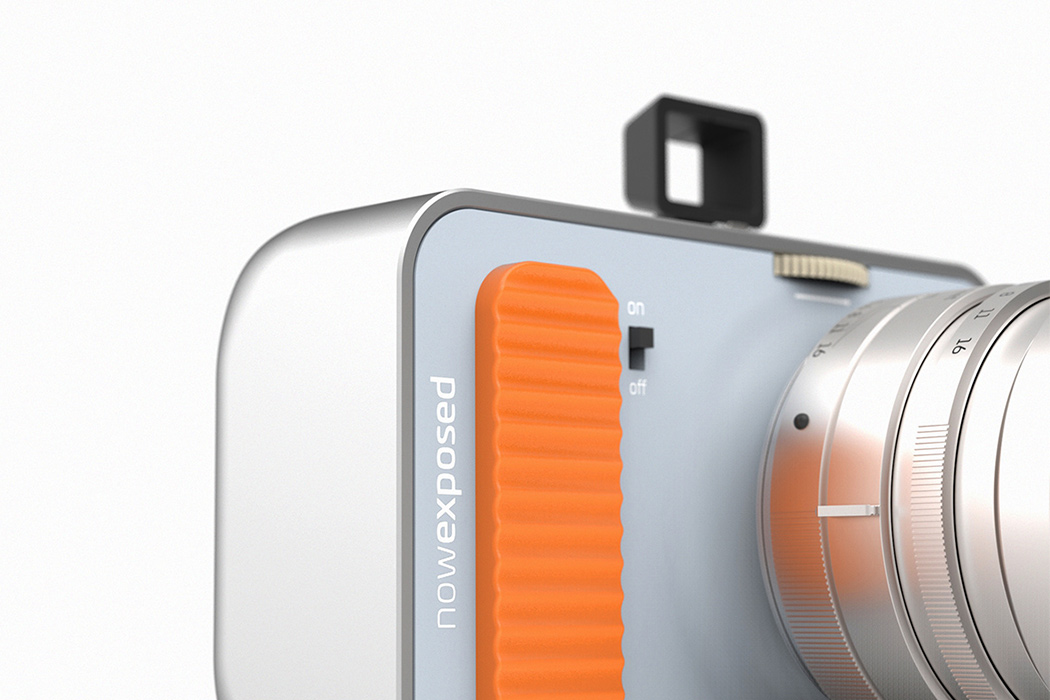
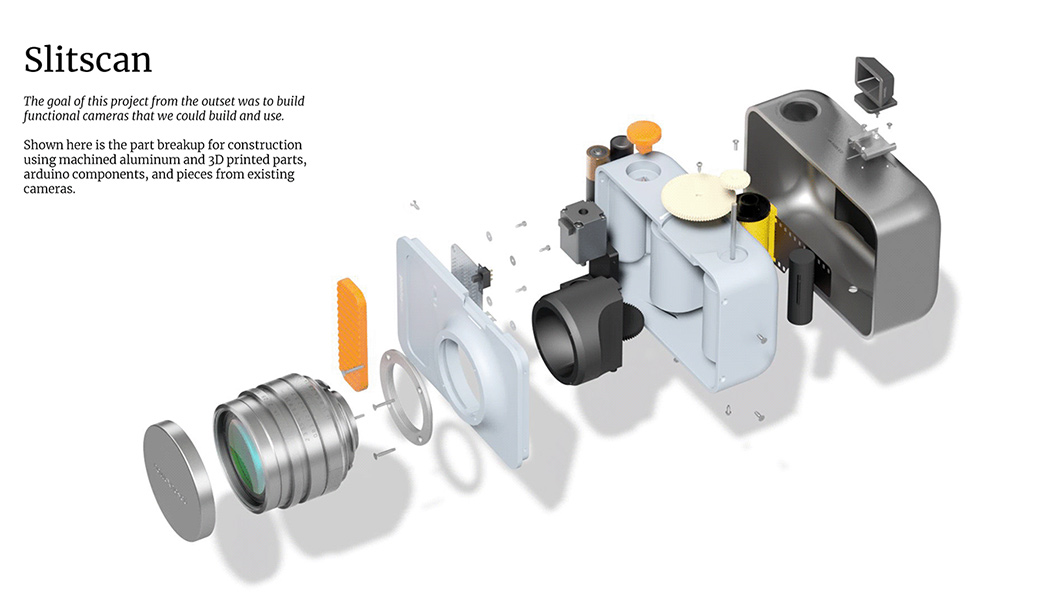
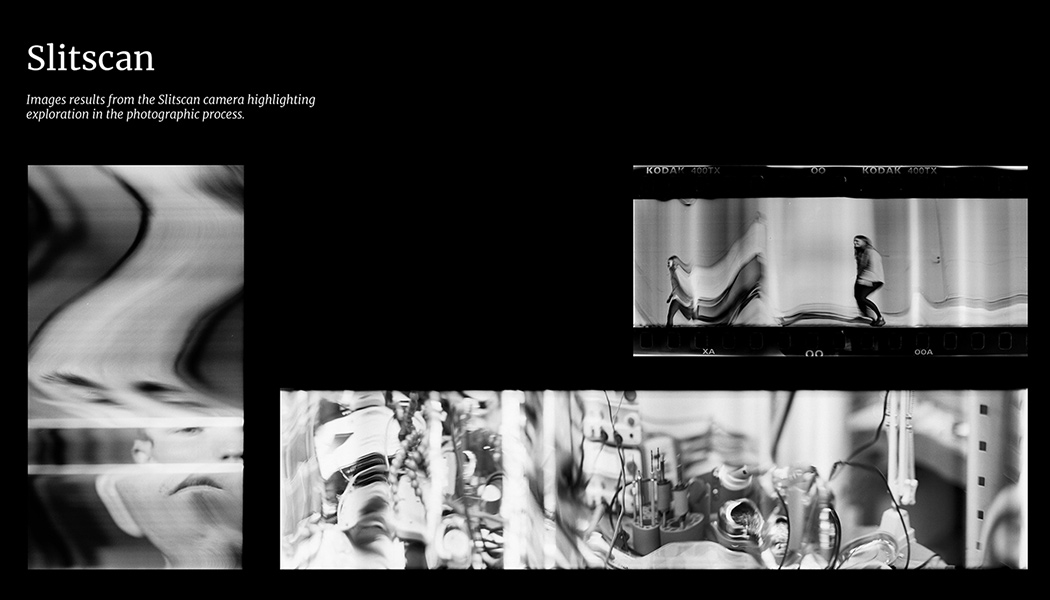
The Slitscan
Finally, the Slitscan camera encourages the most experimentation out of the three devices. Its process works by continuously exposing a thin strip onto the 35mm film. Unlike the other two cameras, which capture the full view of the camera’s lens, the Slitscan only captures a silver of the frame over some time — hence the name. The result is a stretched out, abstract representation of an image. The beauty of the Slitscan’s process is its unpredictability. It encourages the photographer to explore and experiment with this abstract method and would present a challenge even for seasoned film photographers.
